By Christopher Miskimon
In February 1944, the Japanese attacked the Commonwealth’s 7th Indian Division near Sinzweya, Burma. The division divided its troops into several defensive “boxes” to blunt the enemy attack. The Japanese enjoyed some initial success, enough for newspaper and radio announcers in Japan to announce great victories and the destruction of an entire British army. These excited reports proved premature, however.
One of the defensive strongpoints bore the moniker of “Admin Box,” for it contained the division’s administrative troops and organizations. Over the first days of the Japanese offensive, Allied stragglers made their way to the Admin Box before the Japanese arrived and attacked it directly. Since it was far to the rear of the front lines, the position was vulnerable, surrounded by jungle-covered hills and under direct observation by the enemy. Despite this, it was vital to X Corps defenses as it contained enough supplies, particularly fuel, to keep the Japanese offensive going for some time. Until 9th Brigade, an infantry formation, arrived to reinforce it, the Admin Box contained mostly logistics and support personnel, who now took up rifles and submachine guns and dug in. They had no barbed wire or mines, but they dug deep trenches and improvised where they could.
Since the Japanese excelled at infiltration tactics, most of the Box’s subunits formed their own small perimeters, able to defend in any direction. The first Japanese attack on February 6 was beaten back by the accurate rifle fire of a company of mule drivers; the animals were much used in this theater, where good roads were rare. For the first week, the Japanese attacks came during the day, a flurry of rifle fire, hand grenades arcing through the air, and bayonet charges. The Indian and British troops fought back with the same weapons and repeatedly turned their opponents back. Afterward all the attacks went in at night. One successful Japanese infiltration reached a medical unit, where all but three men were slaughtered.
Despite this success, the men in the Admin Box held against everything thrown at them. When the Japanese did succeed at taking a position, a rapid counterattack supported by Grant tanks firing their 75mm cannon and machine guns forced a retreat. Although the night became a time of dread for the defenders, over time their morale actually rose. They began to see the repeated Japanese failures to overrun them as a sign the enemy was not an invincible superman, but a human being who could and was suffering defeat at their hands. At the other boxes, morale further rose when L5 Sentinel light planes, flown by American pilots, landed to carry out the wounded for treatment. This was not possible at the Admin Box, however, where the wounded had to bear their injuries as well as they could. At night, it proved difficult to hear Japanese soldiers approaching due to the ever-present jungle noises of animals and insects. When the Japanese did attack, they often broke into loud screams during the final rush at the Indian positions. Many of these attacks ended only at the point of a knife or bayonet.
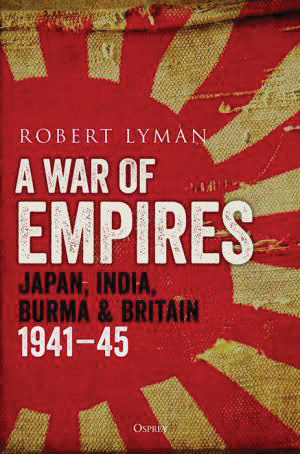 The dogged defense took its toll on the attackers. Within a week, the British commander, General William Slim, knew he would win. Aircraft dropped supplies on the boxes using crude parachutes, keeping the troops fed, armed, and supplied. The Japanese surrounding the boxes were soon surrounded themselves as other Indian units encircled them and cut off the Japanese supply routes. No amount of martial spirit could help the underfed, unsupplied Japanese soldiers achieve victory. They fought on until killed in battle or starved to death in the battle-torn jungle. On February 24, a Grant tank of the 5th Indian Division rolled into the Admin Box and reached the 7th Division headquarters, breaking the siege and the myth of Japanese invincibility.
The dogged defense took its toll on the attackers. Within a week, the British commander, General William Slim, knew he would win. Aircraft dropped supplies on the boxes using crude parachutes, keeping the troops fed, armed, and supplied. The Japanese surrounding the boxes were soon surrounded themselves as other Indian units encircled them and cut off the Japanese supply routes. No amount of martial spirit could help the underfed, unsupplied Japanese soldiers achieve victory. They fought on until killed in battle or starved to death in the battle-torn jungle. On February 24, a Grant tank of the 5th Indian Division rolled into the Admin Box and reached the 7th Division headquarters, breaking the siege and the myth of Japanese invincibility.
The war up to that point was hard fought and mostly favored the Japanese. It took years of preparation, training, and stockpiling to get the Indian Army on a footing to take on the Japanese, and it succeeded. The history of this portion of the war is well told in A War of Empires: Japan, India, Burma, and Britain 1941 – 45 (Robert Lyman, Osprey Publishing, Oxford, UK, 2021, 560 pp., maps, photographs, appendices, notes, bibliography, index, $35.00, hardcover).
This clear, in-depth account of the struggle between Japan, India, and Great Britain in Burma relates one of the most critical yet little known campaigns of the war. It is a large story, and the author succeeds in bringing together its disparate details into a coherent narrative with clear conclusions and supporting information. The book’s descriptions of persons, locations, and actions are vivid and engaging throughout its pages.
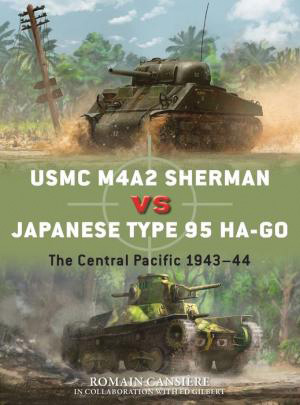 USMC M4A2 Sherman versus Japanese Type 95 Ha-Go: The Central Pacific 1943-44 (Romain Cansiere with Ed Gilbert, Osprey Publishing, Oxford, UK, 2021, 80 pp., maps, photographs, bibliography, index, $22.00, softcover)
USMC M4A2 Sherman versus Japanese Type 95 Ha-Go: The Central Pacific 1943-44 (Romain Cansiere with Ed Gilbert, Osprey Publishing, Oxford, UK, 2021, 80 pp., maps, photographs, bibliography, index, $22.00, softcover)
American and Japanese tank crews were badly mismatched during the Pacific War. The United Sates used its industrial might to produce the Sherman, a medium tank design which served in Marine Corps tank units in 1943-44. Imperial Japan lacked the resources to produce improved tank types, so its troops had to use the outdated Type 95, a 1930s design woefully obsolete by mid-war. Its armor proved so thin the Sherman could easily destroy a Type 95 with a single 75mm high-explosive round without the need to resort to armor-piercing ammunition. Nevertheless, the Japanese used what they had across the Pacific, and there were tank engagements at Tarawa, Eniwetok, Saipan, Tinian, Guam, and Peleliu.
Osprey’s Duel series compares the training, equipment, and tactics of opposing troops along with the design, development, and use of their weapons. This latest volume delves into American and Japanese tanks and their crews. The book is compact and yet full of useful information, giving the reader a thorough introduction to the subject. There are many illustrations, including original artwork, a hallmark of the publisher’s works. The text goes into detail about the tanks and their crews, and the authors give background details on the strategic situation to help place the tactical engagements described in the proper conttext.
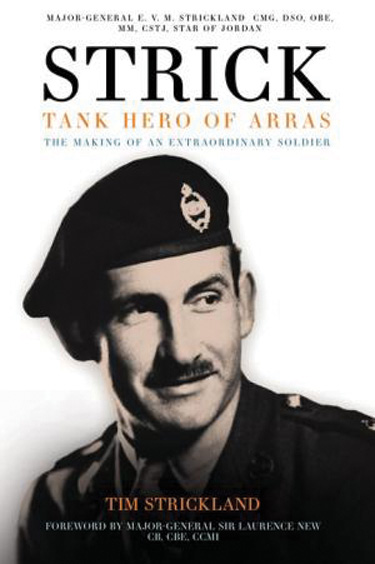 Strick: Tank Hero of Arras, The Making of an Extraordinary Soldier (Tim Strickland, Casemate Books, Havertown, PA, 2021, 490 pp., maps, photographs, notes, bibliography, index, $39.95, hardcover)
Strick: Tank Hero of Arras, The Making of an Extraordinary Soldier (Tim Strickland, Casemate Books, Havertown, PA, 2021, 490 pp., maps, photographs, notes, bibliography, index, $39.95, hardcover)
Arras seemed like a ghost town to Sergeant Eugene Strickland of the 4th Royal Tank Regiment. An air attack by German Stuka dive-bombers ended in destruction, the dust from bomb explosions slowly settling over the streets and ruined buildings. The town’s railway station sat nearby; no civilians could be seen. “Strick” stood in the hatch of a British Matilda I tank, a slow, clattering beast armed with a Vickers machine gun that kept jamming that day. Moving on through the town at the vehicle’s maximum speed of seven miles per hour, they soon spotted some Germans on the outskirts, firing toward some trees. Strick gave them a burst from his Vickers, and the enemy troops ran down a side street into a barn. Telling his driver to get closer, the British sergeant put another burst through the barn door. After a moment, 80 Germans came out and surrendered. They formed into ranks and marched back down the road with the Matilda straining along behind.
This incident proved only one of Strickland’s surprising wartime adventures. He held a commission in the prewar Indian Army but resigned in the 1930s. Enlisting in the British Army, he received another commission soon after the fighting in France and spent the rest of the war as an armor officer in Tunisia and Italy. This biography is written by Strick’s son, who painstakingly gathered his father’s papers and other records to create a detailed and interesting account of his wartime experiences. The book has excellent maps and several personal photographs.
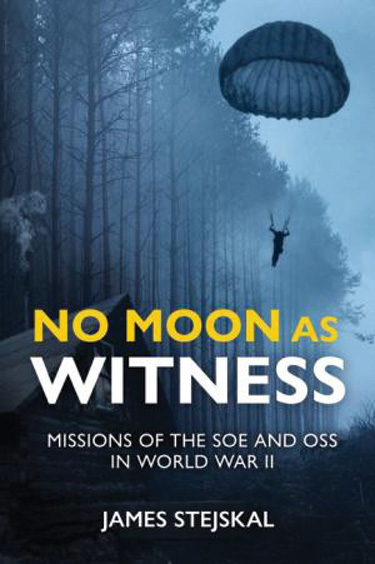 No Moon as Witness: Missions of the SOE and OSS in World War II (James Stejskal, Casemate Publishing, Havertown, PA, 2021, 186 pp., photographs, glossary, bibliography, index, $29.95, hardcover)
No Moon as Witness: Missions of the SOE and OSS in World War II (James Stejskal, Casemate Publishing, Havertown, PA, 2021, 186 pp., photographs, glossary, bibliography, index, $29.95, hardcover)
The British Special Operations Executive and the American Office of Strategic Services worked together during World War II to conduct some of the most daring and successful unconventional warfare missions in history. Agents conducted extensive training before sneaking into mainland Europe to begin operations against the Third Reich. Sometimes they worked alone; often they operated in small teams or cells, cooperating with local resistance fighters to achieve their objectives. These agents carried out missions such as the assassination of SS officer Reinhard Heydrich and the destruction of the heavy-water plant at Vemork, Norway, ending the Nazi atomic bomb program. The OSS and SOE paved the way for the D-Day landings and fought the Germans across France. Many agents paid with their lives for these achievements; some faced capture and torture.
The author presents an overall view of these special-forces organizations in this new book. Chapters are devoted to their origins, the selection and training of agents, their operations and postwar evolution into the modern intelligence agencies. The book is well written with good details on the agents, their specialized equipment, and a selection of their missions.
 Air War on the Eastern Front (Mike Guardia, Casemate Publishing, Haver-town, PA, 2021, 128 pp., photographs, bibliography, index, $24.95, softcover)
Air War on the Eastern Front (Mike Guardia, Casemate Publishing, Haver-town, PA, 2021, 128 pp., photographs, bibliography, index, $24.95, softcover)
When the Nazis crossed the border of the Soviet Union in June 1941, their Luftwaffe smashed into a Soviet air force still reeling from Stalin’s purges of the 1930s. While the Soviets proved able to launch 6,000 sorties against the Germans on the first day of combat, by day’s end thousands of their planes lay destroyed on the ground or knocked from the sky. As the campaign ground onward, however, the Red Air Force’s flyers slowly recovered from their initial losses and began gaining experience and developing the tactics needed to take the fight to the invaders. As their pilots and planners improved, Soviet factories won the war of production, turning out more planes than even the skilled Germans could hope to defeat. By 1944, the Soviets had air superiority across the entire Eastern Front, supporting the now-inexorable advance of their ground forces.
This new book is part of Casemate Illustrated, a new series comparable to the compact yet informative books successfully published by Osprey for decades. The book is equally illuminating, providing details on both combatants’ air forces, aircraft, and operational experiences. As noted in the series title, the book is extensively illustrated, using a mix of color and black-and-white photographs along with color line drawings of various aircraft. The text is well written and includes numerous small details that enrich the narrative.
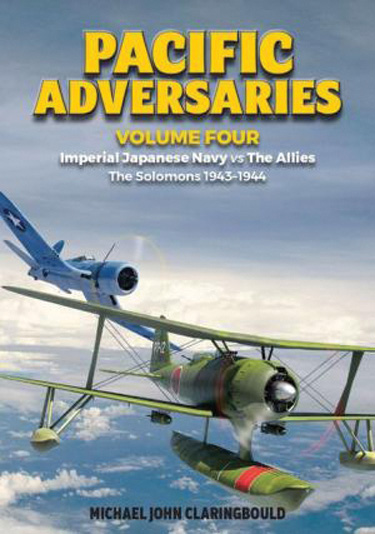 Pacific Adversaries Volume Four: Imperial Japanese Navy versus the Allies, the Solomons 1943-1944 (Michael John Claringbould, Avonmore Books, Kent Town, Australia, 2021, 108 pp., maps, photographs, bibliography, $39.95, softcover)
Pacific Adversaries Volume Four: Imperial Japanese Navy versus the Allies, the Solomons 1943-1944 (Michael John Claringbould, Avonmore Books, Kent Town, Australia, 2021, 108 pp., maps, photographs, bibliography, $39.95, softcover)
By the end of 1942, the fighting on and around Guadalcanal wound down with a Japanese defeat. No longer able to take the offensive in the region, Imperial Japan nonetheless waged a bitter and largely successful defensive campaign in the Solomons. The Japanese doggedly maintained air superiority around their main base at Rabaul throughout 1943, until units withdrew to fight elsewhere in 1944. Afterward, only a small force remained in the area, quickly overwhelmed by the growing strength of the Allies.
This new work includes chapters on different aerial engagements by both sides during the period 1943-44. The author went to great lengths to study existing documents and participant statements, allowing him to match the records for each action. This creates an accurate account for the reader as the author often solves the discrepancies common in official statements. The book is also beautifully illustrated, with a mixture of period photographs, color, line drawings of aircraft, and a few new pieces of artwork. The drawings include the specific squadron and aircraft markings of the participants.
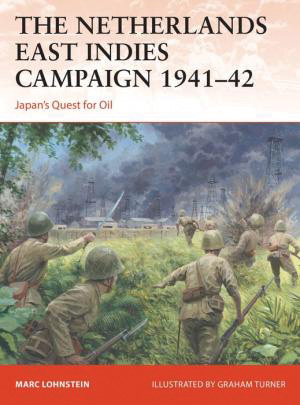 The Netherlands East Indies Campaign 1941-42: Japan’s Quest for Oil (Marc Lohnstein, Osprey Publishing, Oxford, UK, 2021, 96 pp., maps, photographs, bibliography, index $24.00, softcover)
The Netherlands East Indies Campaign 1941-42: Japan’s Quest for Oil (Marc Lohnstein, Osprey Publishing, Oxford, UK, 2021, 96 pp., maps, photographs, bibliography, index $24.00, softcover)
Japan began the Pacific War in large part as a search for the natural resources it needed to remain an independent world power. Chief among these required assets were oil and rubber, vital needs for an industrial economy and a powerful, modern military. For Japan, the closest place to get those commodities was the Netherlands East Indies, now Indonesia. Thus, these islands ranked among the first attacked by the Japanese. In a quick combined-arms campaign, Imperial forces landed on several islands and rapidly made gains. The Dutch defended stubbornly with the limited assets they possessed, supported by a few military forces from Great Britain, Australia, and the United States. Given the paucity of Allied resources in the region, the Japanese victory was practically assured, though not cheap in terms of troops and time.
This latest volume in Osprey’s Campaign series delves into the fighting in the Netherlands East Indies with detailed looks at each side’s troops, weapons, plans, and conduct. The book covers the fighting up to late March 1942, when the last Allied units surrendered. Excellent maps accompany the clear, readable text, with numerous photographs and original artwork bringing the narrative to life. Many Western works on the Pacific War give minimal attention to the fighting on these islands; this book bring the readers a detailed understanding of one of the main objectives of Japan’s campaign.
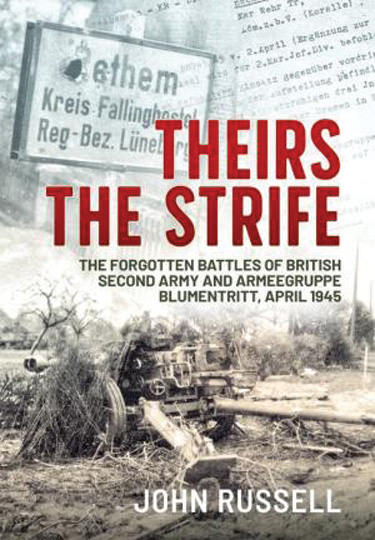 Theirs the Strife: The Forgotten battles of British Second Army and Armeegruppe Blumentritt, April 1945 (John Russell, Helion Books, South Yorkshire, UK, 2021, 502 pp., maps, photographs, appendices, bibliography, index, $49.95, hardcover)
Theirs the Strife: The Forgotten battles of British Second Army and Armeegruppe Blumentritt, April 1945 (John Russell, Helion Books, South Yorkshire, UK, 2021, 502 pp., maps, photographs, appendices, bibliography, index, $49.95, hardcover)
The final month of the war proved a maelstrom for the British soldiers of the VIII and XII Corps as they struggled to cross the Weser and Aller Rivers. It was obvious to all that the war would soon be over, but these British troops ran into a German division formed from former naval personnel augmented with a battalion of Hitler Youth. Though this was the first battle for most of the men in the German unit, they fought tenaciously despite their inexperience. The British had been fighting for months and most of them were exhausted, but they pressed on and overcame their opponents, revealing their own courage and resilience. These operations were composed of hundreds of small-unit actions by tankers, infantry, paratroopers, and commandos.
The author invested years researching the actions so well described in this book, touring the battlefields until so knowledgeable he could give tours to British soldiers, imparting to them the lessons and history of the fighting. Many firsthand accounts appear in the narrative, breathing life into each chapter, each advance by the soldiers depicted in its pages. Over 100 good maps and figures provide orientation and perspective. Many of the photographs come from participants. The volume gives a welcome expansion to the limited knowledge of this time and place in the war.
New and Noteworthy
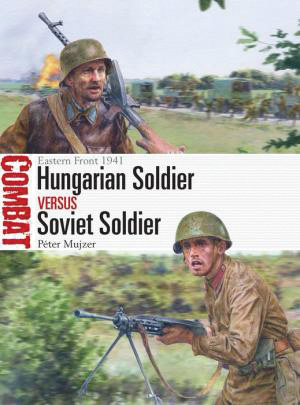 Combat: Hungarian Soldier Versus Soviet Soldier: Eastern Front 1941 (Peter Mujzer, Osprey Publishing, 2021, $22.00, softcover) Hungary entered the war against the Soviet Union at the end of June 1941. This detailed work compares the two armies’ equipment, tactics, and performance.
Combat: Hungarian Soldier Versus Soviet Soldier: Eastern Front 1941 (Peter Mujzer, Osprey Publishing, 2021, $22.00, softcover) Hungary entered the war against the Soviet Union at the end of June 1941. This detailed work compares the two armies’ equipment, tactics, and performance.
Ju 87 Stuka Versus Royal Navy Carriers: Mediterranean (Robert Forsyth, Osprey Publishing, 2021, $22.00, softcover) Squadrons of Stuka dive bombers flew against British aircraft carriers in repeated attempts to sink them during 1941-42. The book reveals the tactics each side used and the results of their efforts.
The Churchill Quiz Book: How Much Do You Know About Britain’s Wartime Leader (Kieran Whitworth, Osprey Publishing, 2021, $15.00, softcover) Winston Churchill was a colorful character as well as one of the United Kingdom’s most important leaders. This book compiles extensive facts and trivia about him.
Splinter on the Tide (Phillip Parotti, Casemate Publishers, 2021, $22.95, softcover) This work is from the publisher’s new series of military fiction. This volume tells the story of a young naval officer commanding a submarine chaser on convoy duty.
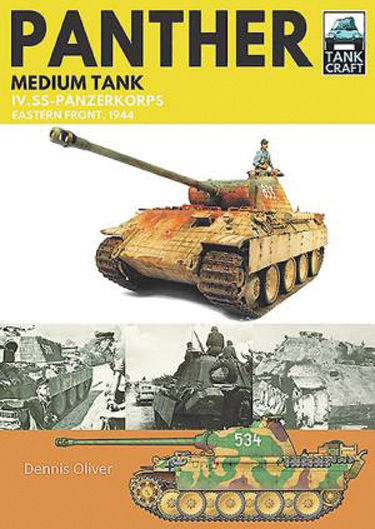 Panther Medium Tank: IV SS Panzerkorps Eastern Front, 1944 (Dennis Oliver, Pen and Sword Books, 2021, $24.95, softcover) The Panther tank units which saw service with IV SS Panzerkorps are the focus of this guide to model building and painting.
Panther Medium Tank: IV SS Panzerkorps Eastern Front, 1944 (Dennis Oliver, Pen and Sword Books, 2021, $24.95, softcover) The Panther tank units which saw service with IV SS Panzerkorps are the focus of this guide to model building and painting.
The Warsaw Uprisings 1943-1944 (Ian Baxter, Pen and Sword Books, 2021, $26.95, softcover) Part of the Images of War series, this photobook contains over 100 photographs of the fighting in Warsaw between the Nazi invaders and the Polish citizenry.
A Photographic History of Infantry Warfare 1939-45 (Simon and Jonathan Forty, Pen and Sword Books, 2021, $34.95, hardcover) Each chapter of this book looks at a different facet of infantry combat during the war. It is illustrated with photographs of all the combatant armies.
Himmler’s Hostages: The Untold Story of Himmler’s Special Prisoners and the End of WWII (Tom Wall, Pen and Sword Books, 2021, $42.95, hardcover) Himmler used both prisoners of war and concentration camp inmates as bargaining chips for negotiating an end to the war. This book relates their experiences.
Britain’s Airborne Forces of WWII: Uniforms and Equipment (Mark MacGreehan, Frontline Books, 2021, $49.95, hardcover) This new work displays the variety of weapons, equipment, and uniforms worn by British paratroopers, using full color images and wartime photographs.
U.S. Aircraft Carriers 1939-45 (Ingo Bauernfeind, Casemate Books, 2021, $49.95, hardcover) The author covers each class of American aircraft carrier and the service of the individual ships. Extra chapters detail the aircraft they carried and how the ships were laid out internally.
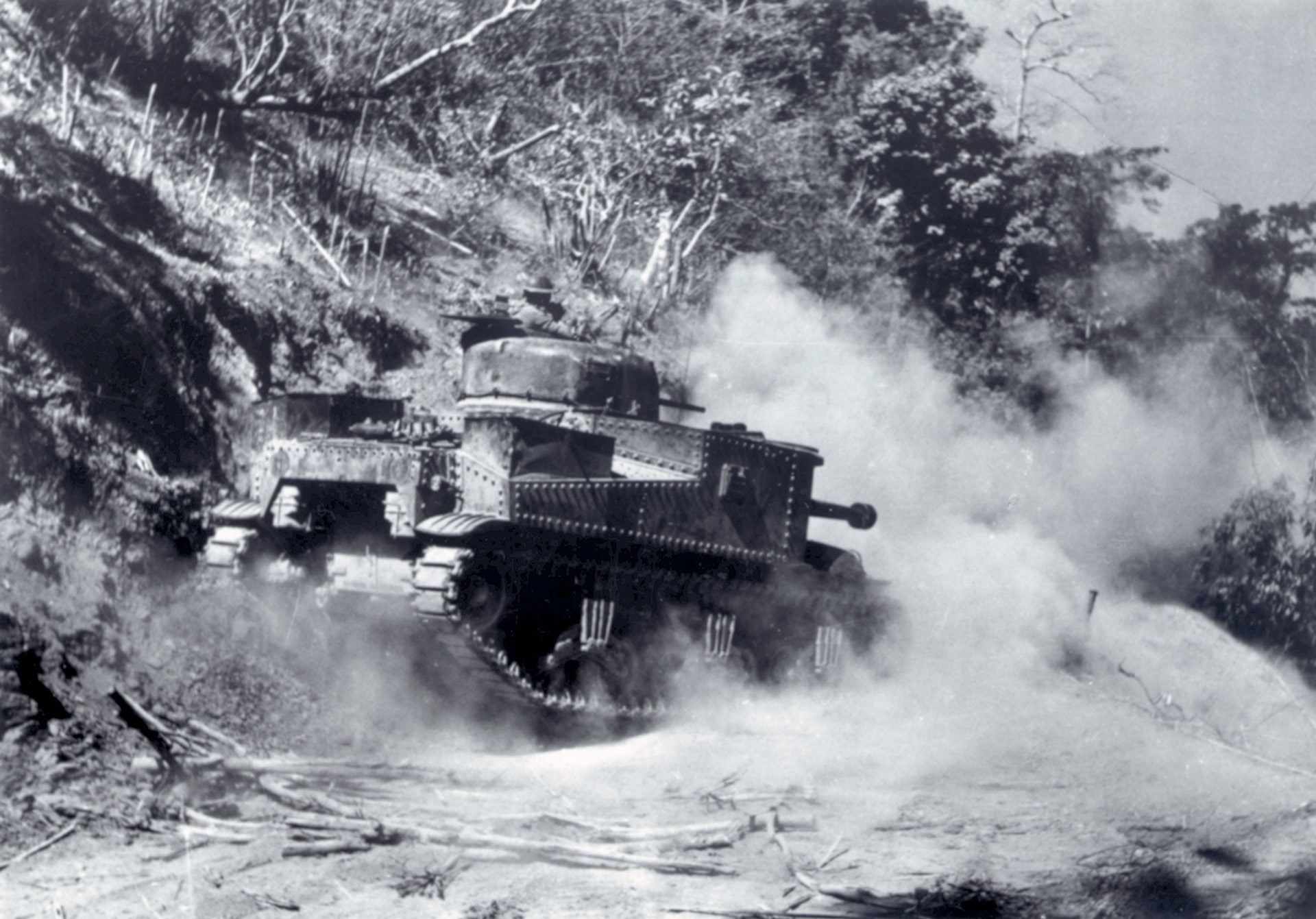

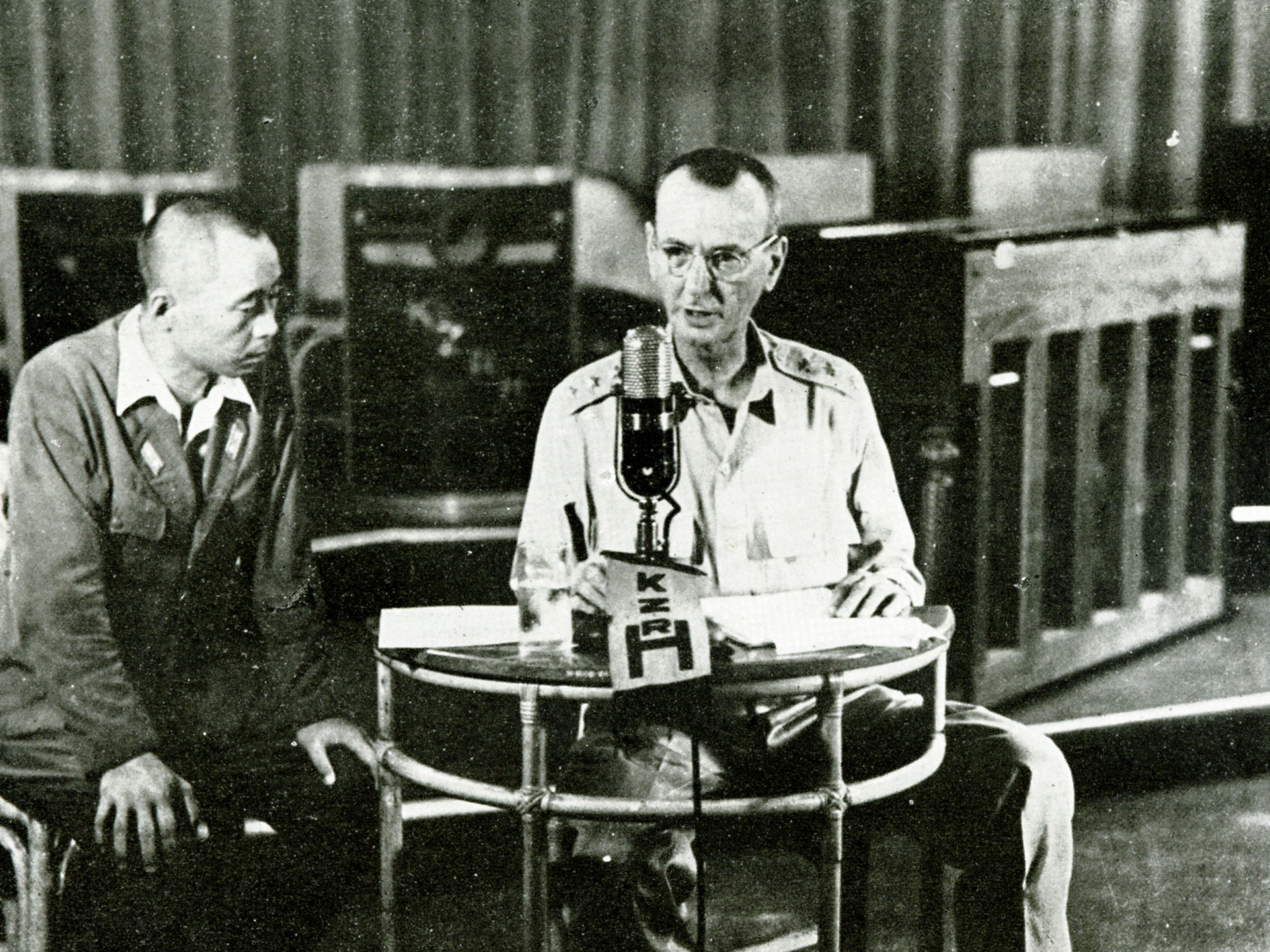
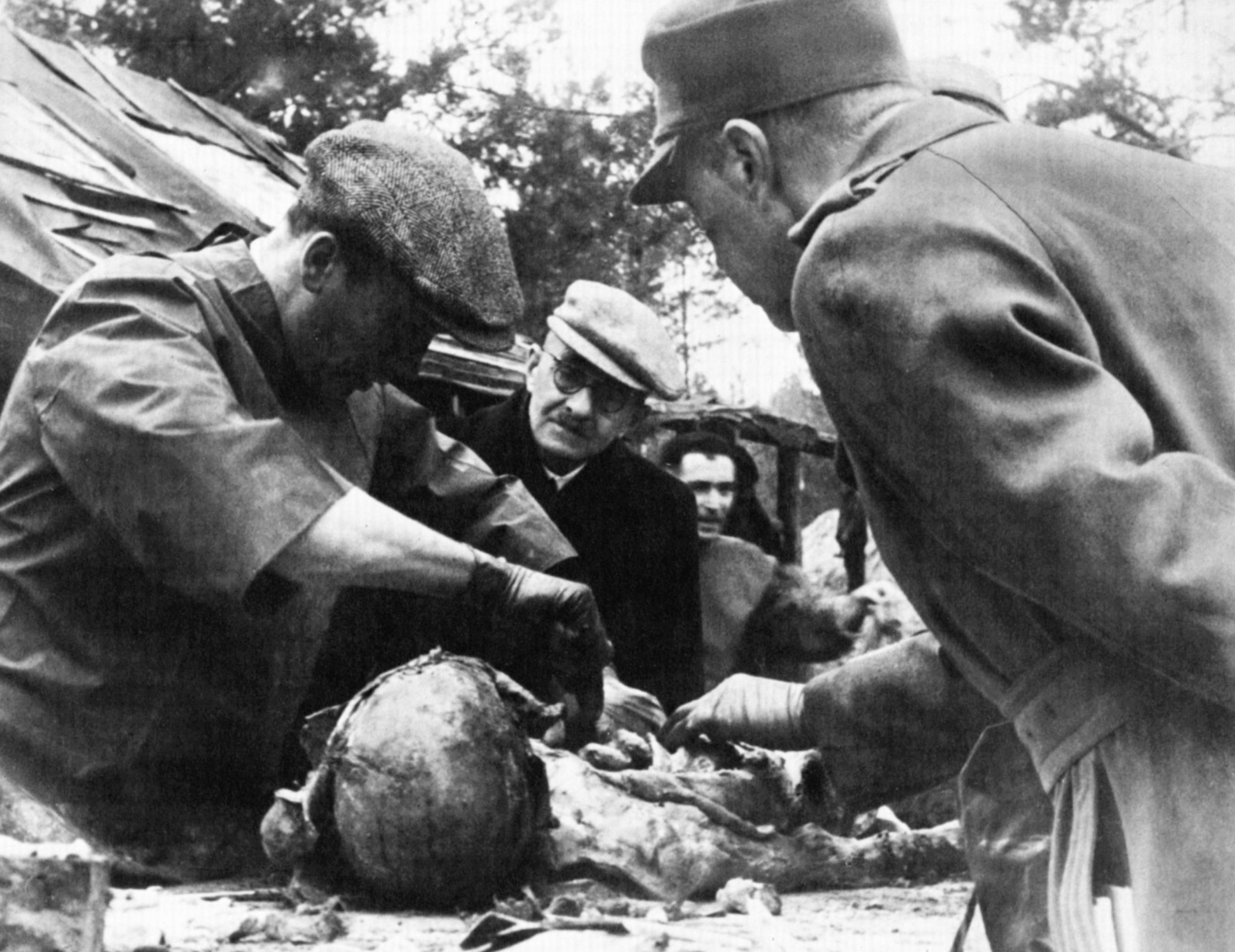
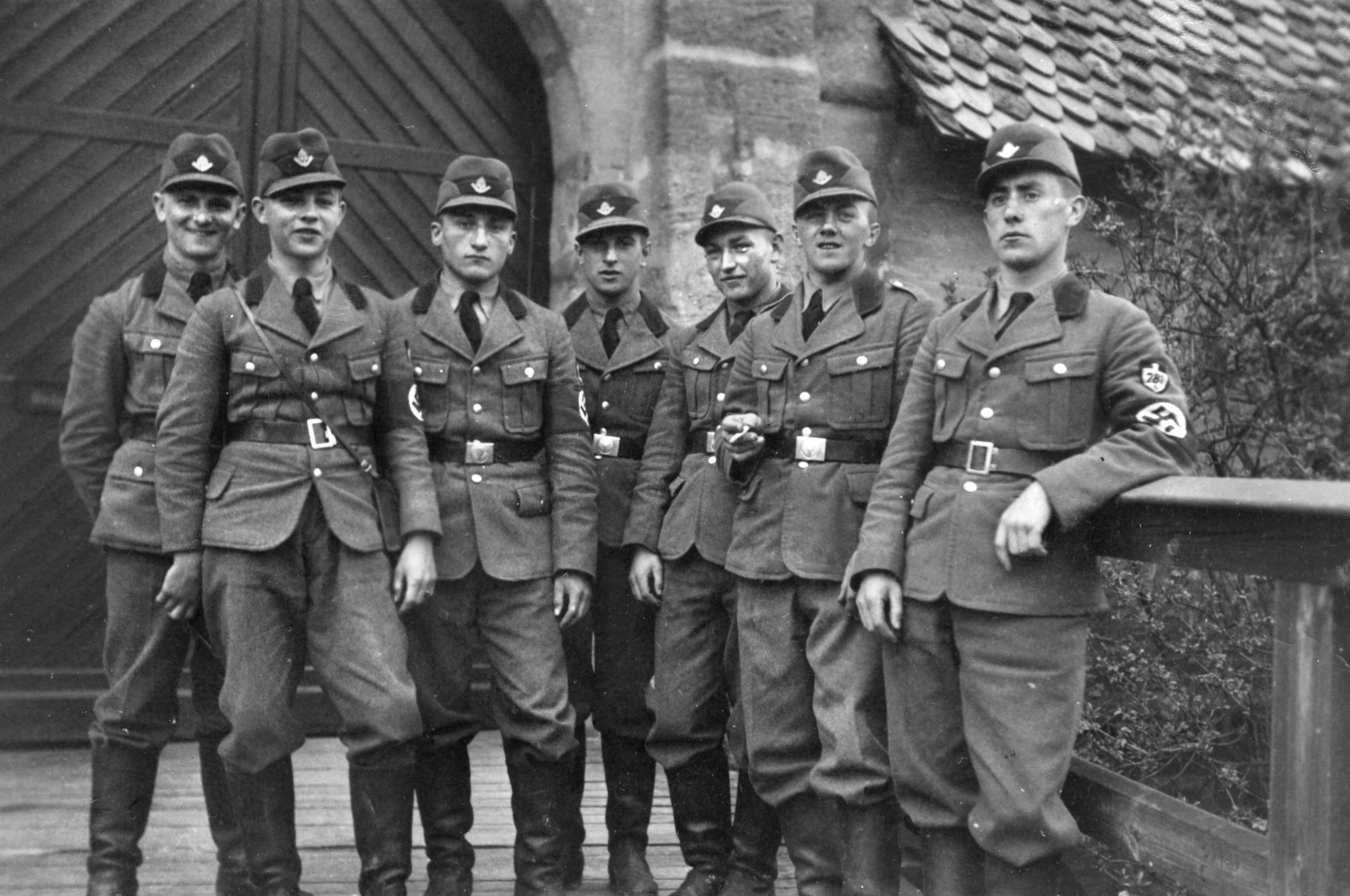
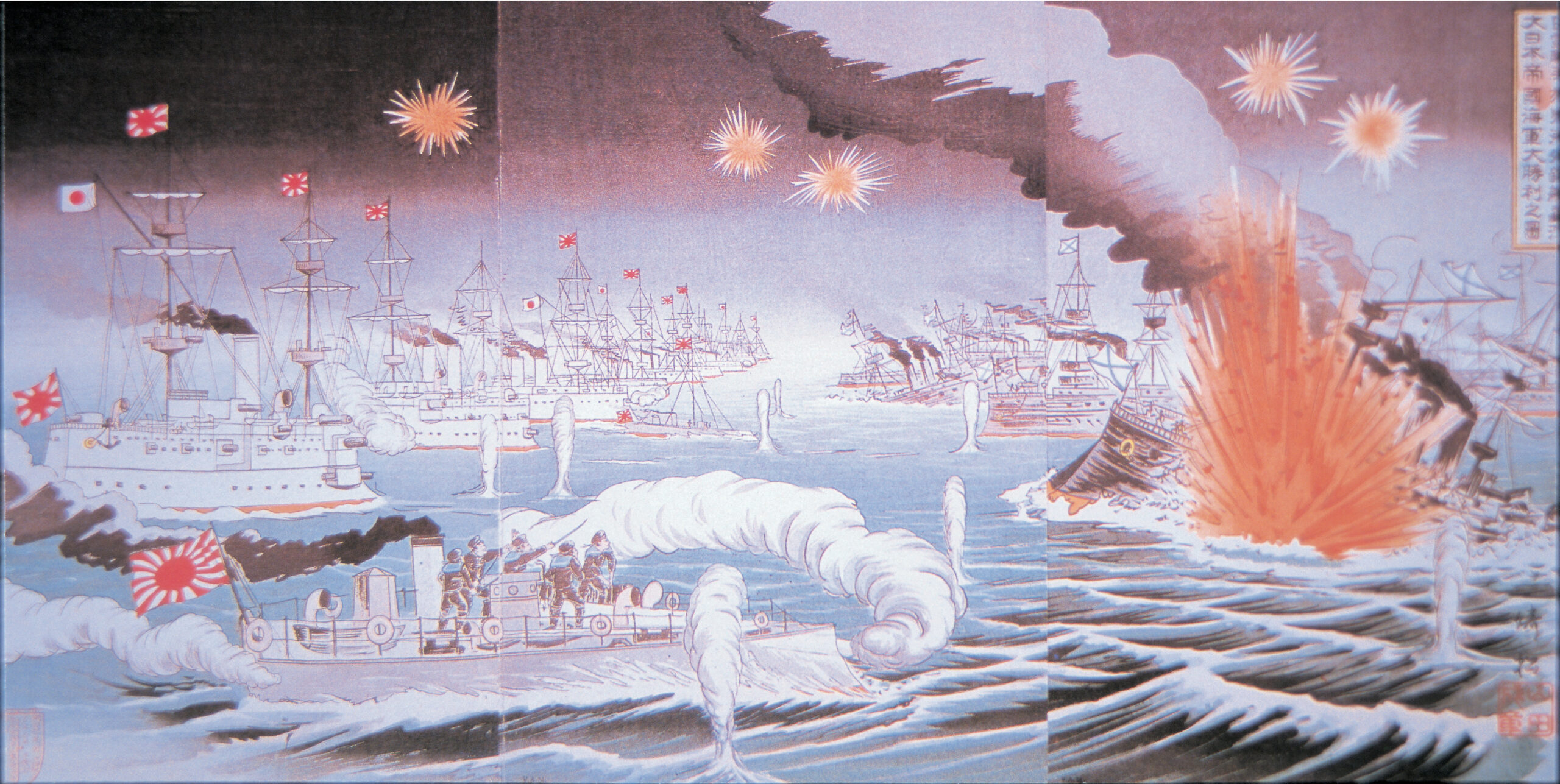
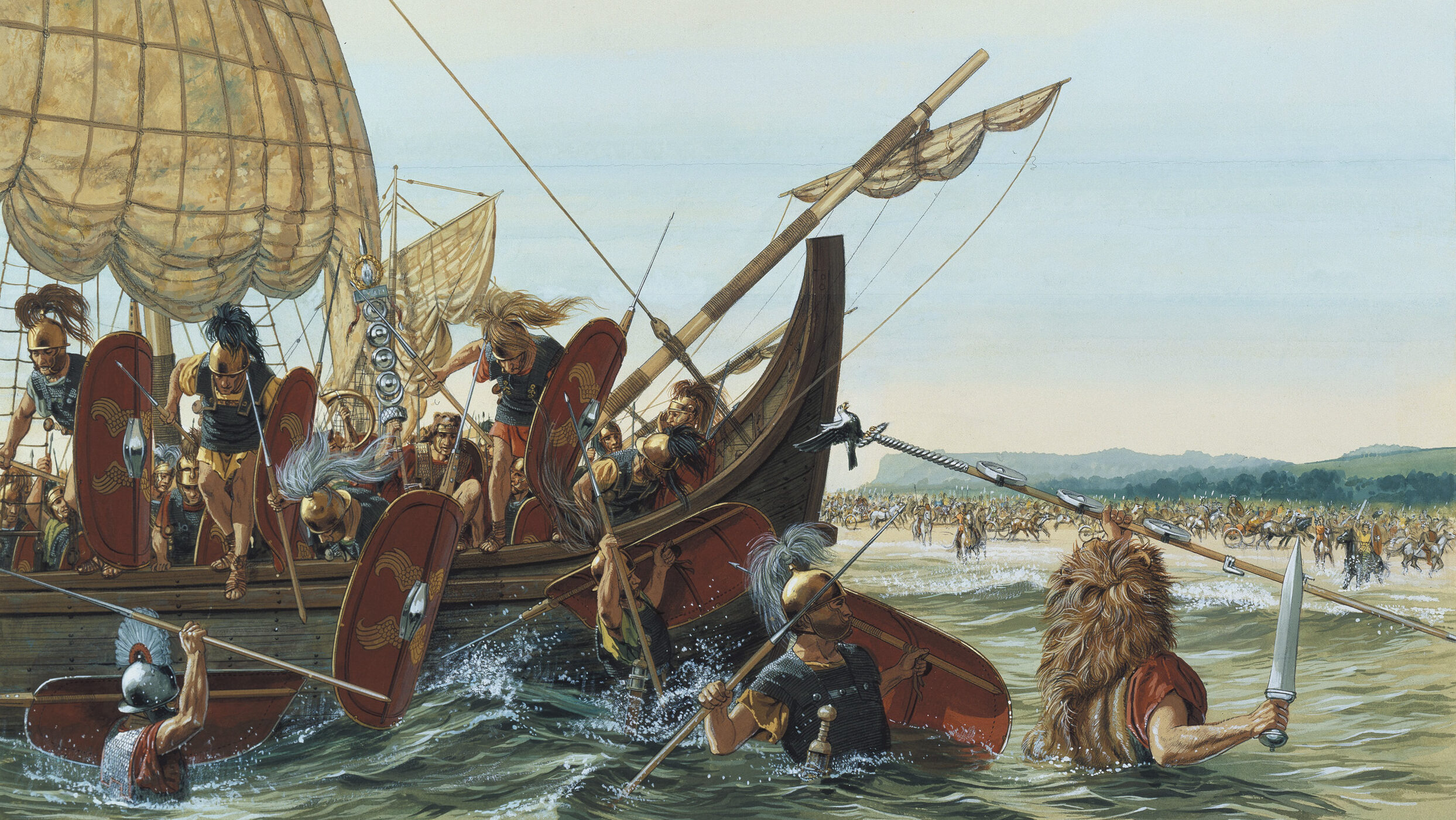
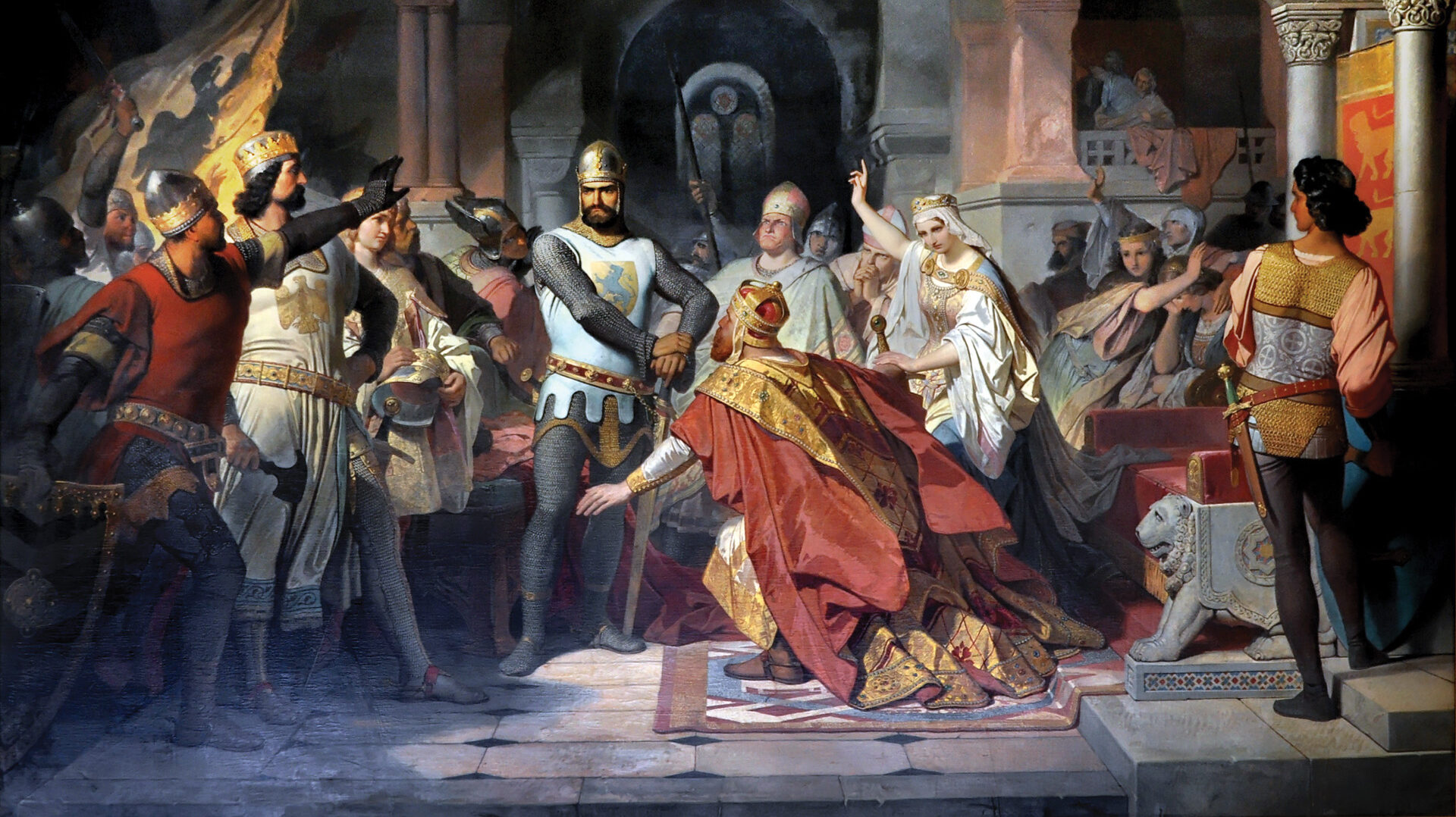

Join The Conversation
Comments
View All Comments